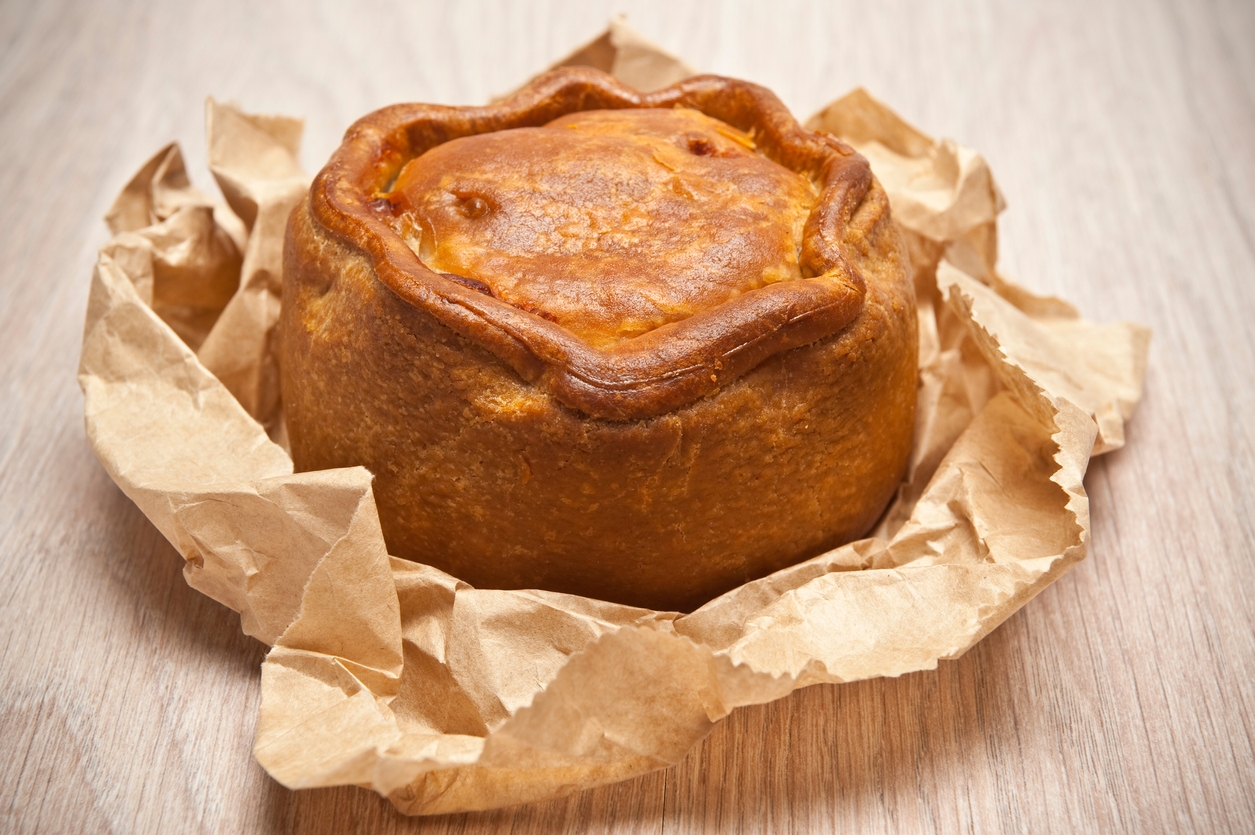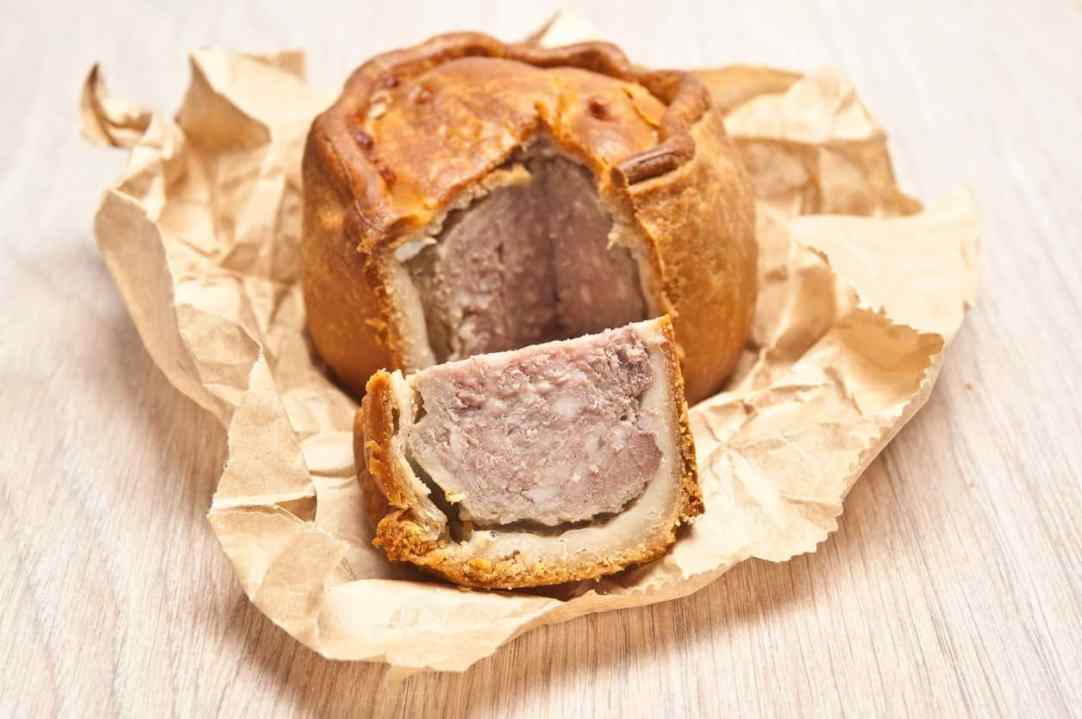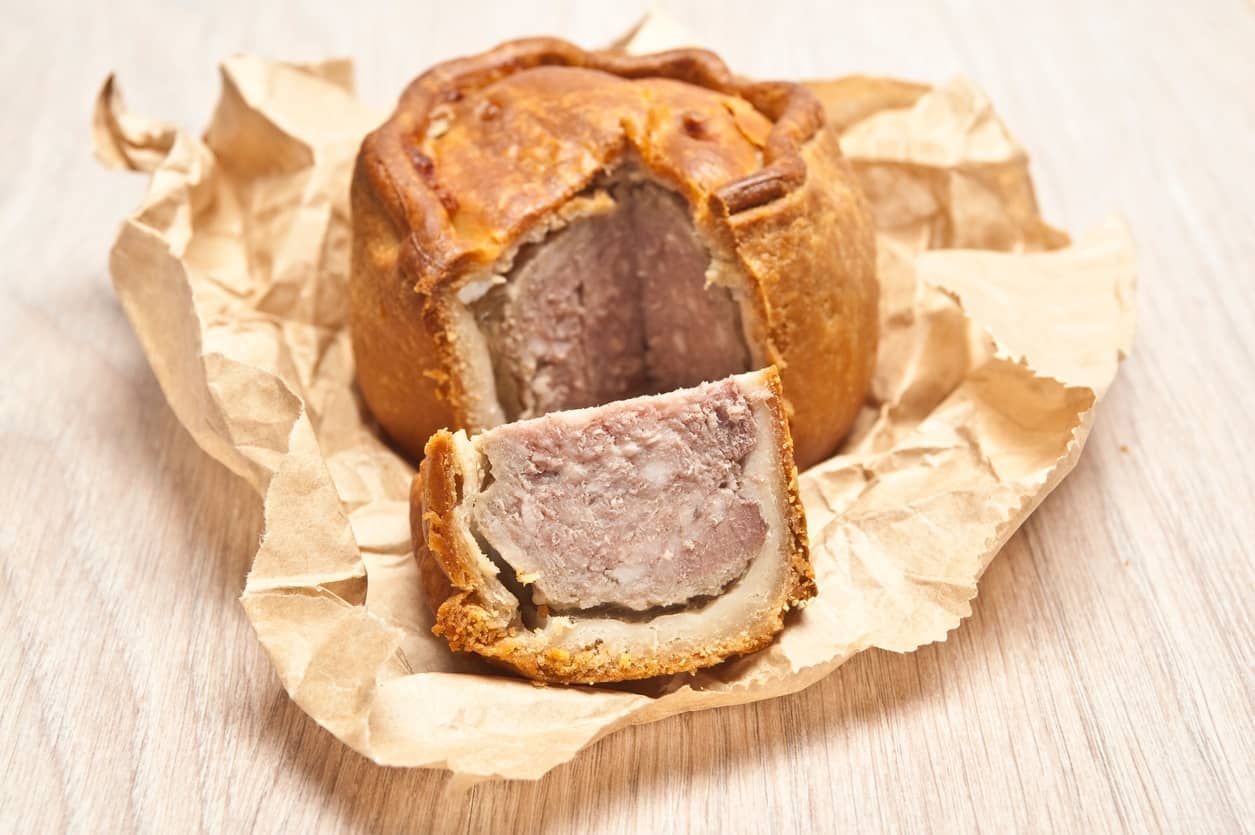The humble pork pie has held its place in English culinary history for hundreds of years and now it finds itself embroiled in the latest Westminster plot to oust the Prime Minister. This iconic lunchtime staple may look simple to pull off but, just like the current political manoeuvres of SW1A, it’s far from a small undertaking.
Although crust pastry predates the pie itself, it wasn’t pastry as we now know it, but a water-flour-oil mix used by the Romans to cover their meat during cooking. This protected the meat from burning during the cooking process and helped it retain moisture; it wasn’t intended for consumption, and was discarded after baking.
Hot water crust pastry first appeared in the 14th century, mixing much needed fat into the Roman salt dough, and brought with it a wealth of edible possibilities, the pork pie perhaps being that with the most staying power. So if you fancy a little weekend project, here’s a recipe for a proper pork pie, made by hand, right down to the jelly. It’s worth the effort: handsome and golden, it stands tall, packed full of meat and plump with jelly. It is a pork pie to be proud of.
Tips and tricks for the perfect pork pie:
- Leave the pastry to cool. It is infinitely more workable, and will not slump like some sad thing inside your tin. Be patient when dealing with it: it really is important that there are no holes, and that the pastry is uniformly thick.
- Malt extract: because the main body of the pie doesn’t see the oven directly, there is the risk of only the top browning and the rest of the pastry looking at best, wan or, at worst, a pallid grey. The malt extract helps with this, and also gives the pastry a crispness it might otherwise lack.
- Jelly: I got the best results from doing a two-stage fill. The meat will suck up a lot of the initial jelly, which is no bad thing, but it means that a pie which seemed replete with jelly, is suddenly lacking after 15 minutes. You can solve this with a refill when the first jelly-pour has cooled. You, of course, don’t have to make your own stock with trotters if you don’t want to, but it is surprisingly easy, and doesn’t require any messing about with gelatine. You can ape the trotter stock by making pork or ham stock from a cube and adding powdered or leaf gelatine. It goes like this…

Classic Pork Pie
Makes: 1 medium-sized pork pie
Takes: 3 hours, plus refrigeration
Bakes: 1 hour 30 minutes
For the pastry
50g butter
65g lard
160g strong white flour
160g plain flour
85ml water
1 teaspoon salt
1 tablespoon of malt extract
1 egg yolk
1 pig’s trotter
1 onion
1 small carrot
1 small bunch of parsley stalks
1 rib of celery
6 black peppercorns
For the meat
250g boned pork shoulder
65g pork belly
65g streaky bacon
½ tsp ground mace
½ tsp ground white pepper
1/2 tsp ground nutmeg
1. First, make the jelly. Peel the onion and carrot, and place in a stock pot along with the trotter, parsley, celery and peppercorns, and a pinch of salt. Cover with water and bring to the boil. Lower the heat to a simmer and leave for an hour. Strain the liquid into a bowl: it should be golden brown, but not a deep brown, and should be silken and noticeably reduced. Refrigerate overnight.
2. The following day, have a look at the stock; it should have jellified and slightly set. If not, return to the heat and reduce it down a little further; if it’s more set than you would like, you can thin it out with water.
3. Now, prepare your meat. Cut all the meat cuts into 5mm squares. For the bacon, this is easiest to do with sharp scissors. Add the mace, white pepper and nutmeg, and a pinch of salt, and mix through the meat.
4. Make your pastry. Rub the butter into the flour in a large bowl, until the mixture looks like breadcrumbs. Place the lard and water in a small saucepan and heat until the lard has melted, but don’t allow it to boil. Add the salt and the malt extract, give the mixture a gentle, but firm stir, and add to the flour mix.
5. Mix first with a knife and, when it cools enough, with your hands, bringing it into a ball of smooth, even dough. Press the dough out onto a plate and cover with clingfilm, and leave it to cool to room temperature.
6. When cool (but not cold), lightly flour a work surface, and roll the dough out into a rough rectangle, until it is about 3/4cm thick. Fold the top third onto the middle third, and the bottom third on top of that. Roll out and repeat the folds again.
7. Roll 2/3 of the pastry to 1cm thickness, and cut into a circle (I use a dinner plate for this). Place inside the pie mould, and using your fingers, press the dough into the edges of the mould, and smooth any pleats, to ensure an even dough all the way round. The dough should reach the top of the mould but no further. Ensure there are no gaps or holes, or terribly thin areas, or the jelly will leak later on.
8. Roll the remaining dough to the same thickness, and cut into a circle (I use a side plate or saucer for this). Tip the meat into the mould, and press down: it should be tightly packed, as it will lose volume when cooked. Brush the edges of the pastry with egg yolk, and place the remaining dough circle on top, as a lid. Crimp the edges evenly, pressing gently to ensure they stick, and brush the lid with the rest of the egg yolk. Create a hole in the lid about the size of a biro. Chill for an hour.
9. Preheat the oven to 160°C. Remove the pie from the fridge and place on a baking tray in the oven for 1 hour 30 minutes.
10. Leave to cool for 30 minutes. Towards the end of the 30 minutes, warm the trotter jelly until it is pourable. Place a funnel into the hole made in the pastry, and slowly pour the jelly into the hole until the pie is full and won’t take any more. Place in the fridge to completely cool, and then rewarm the jelly and add in the same way as before, as some of the jelly will sink into the meat as it cools. When completely cool, ease the pie from the mould.







Comments